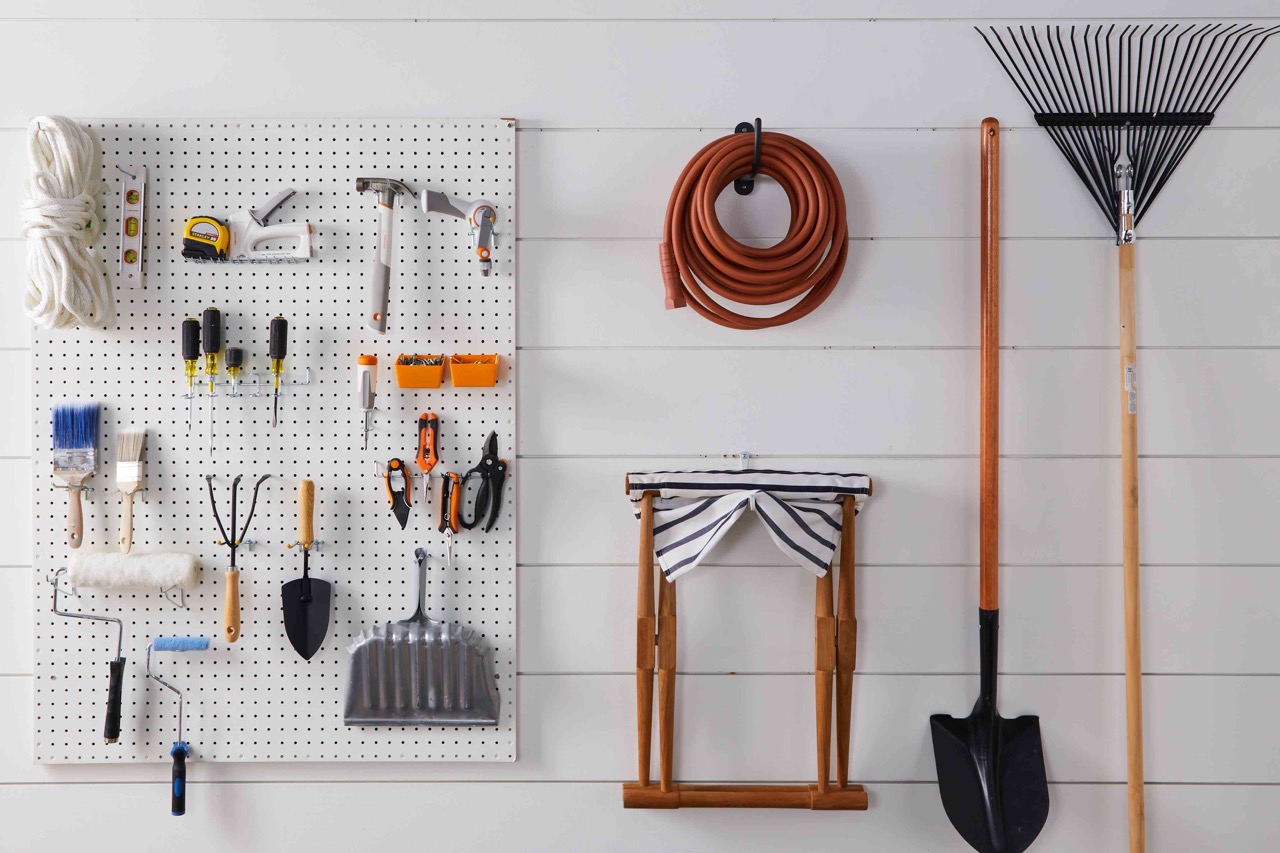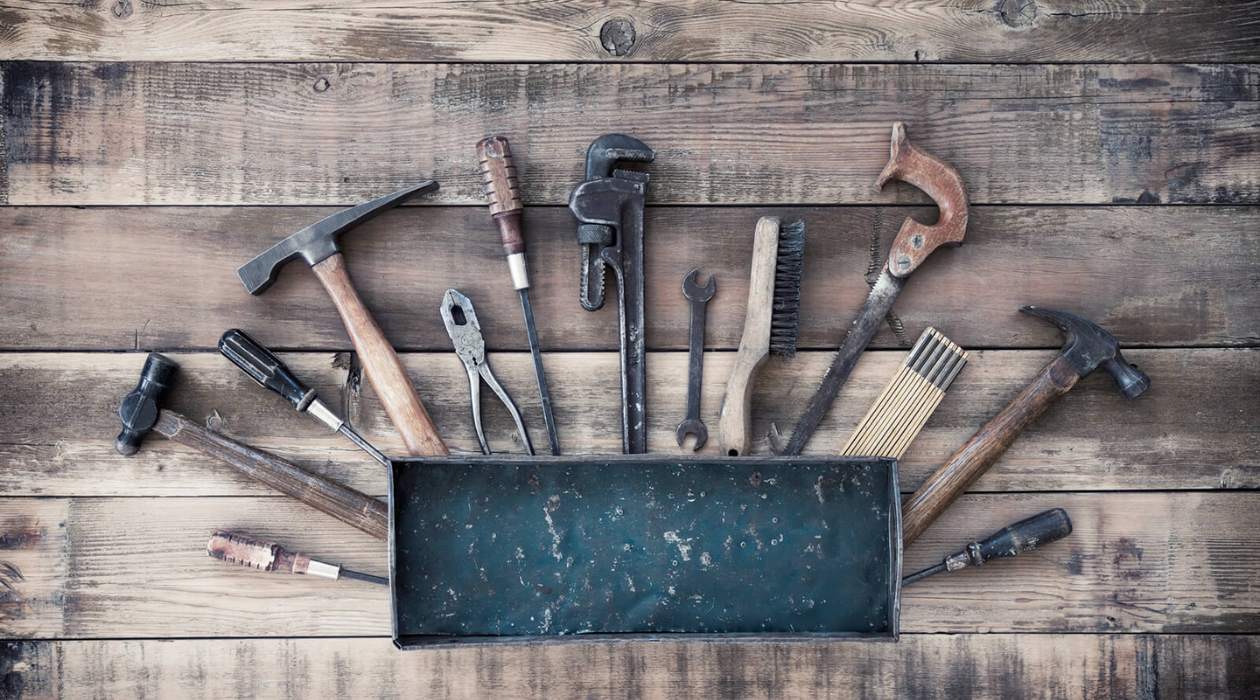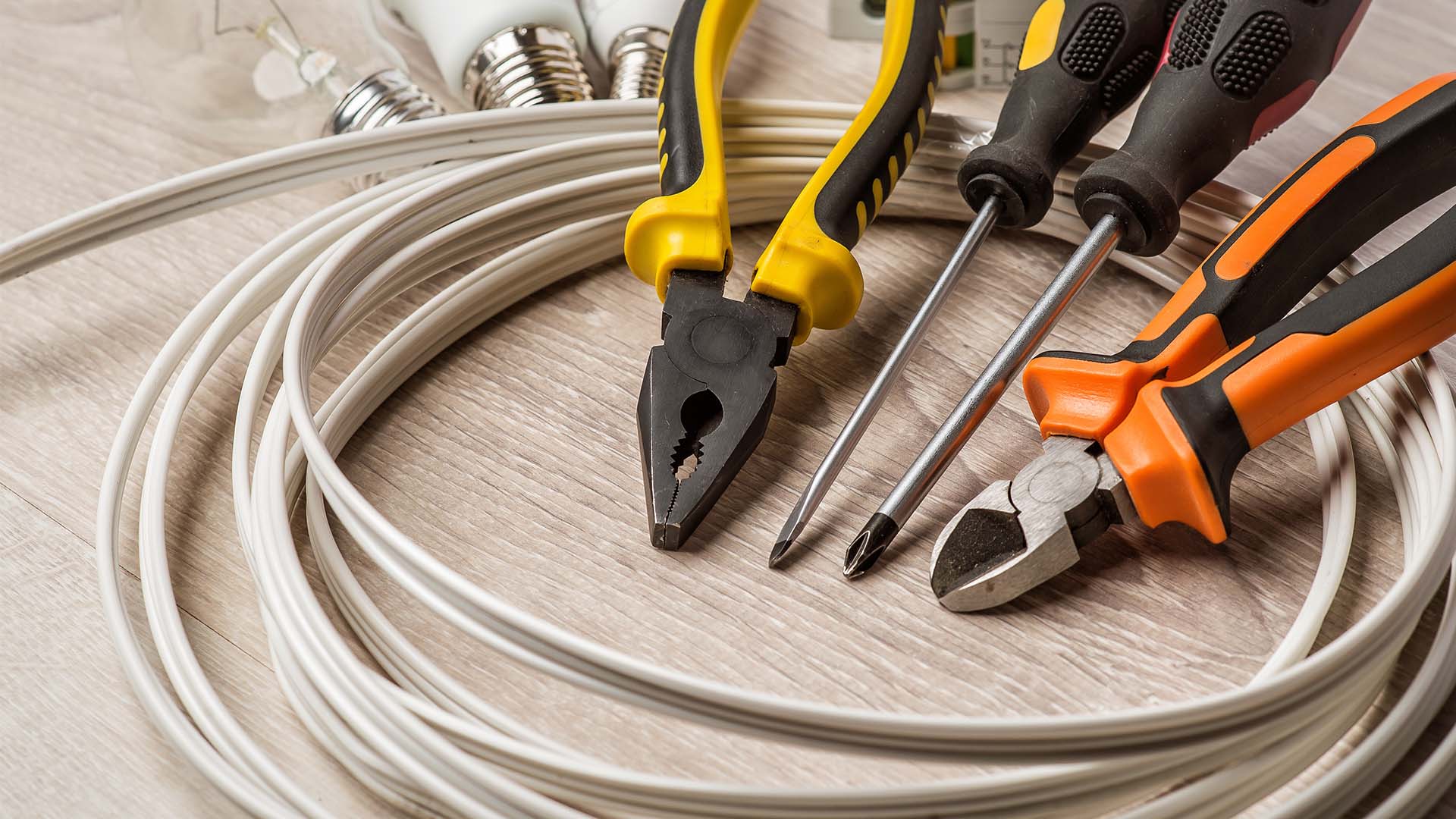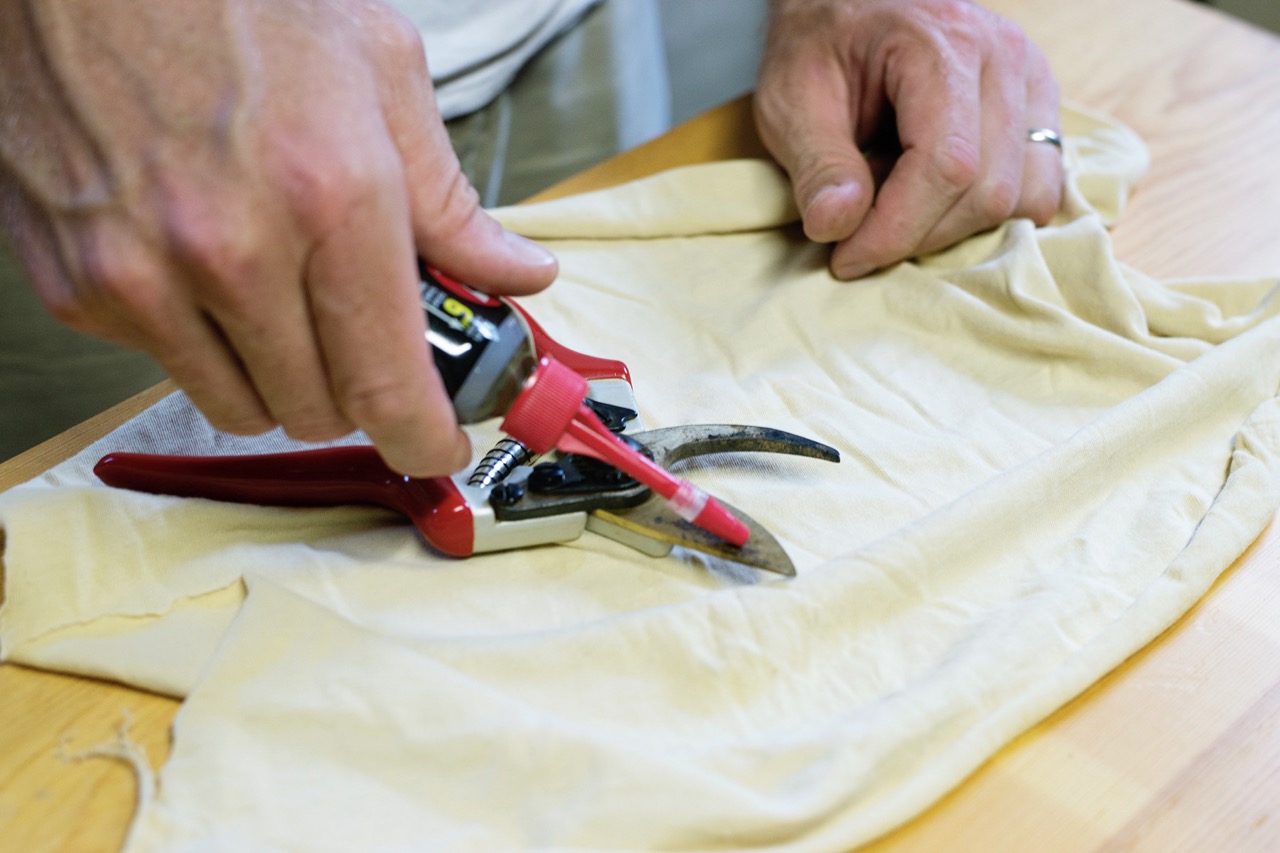

Articles
How To Organize Hand Tools
Modified: January 21, 2024
Discover effective strategies and useful tips in our articles on how to efficiently organize your hand tools. Simplify your workspace and enhance productivity today.
(Many of the links in this article redirect to a specific reviewed product. Your purchase of these products through affiliate links helps to generate commission for Storables.com, at no extra cost. Learn more)
Introduction
Hand tools are essential for any DIY enthusiast, handyman, or professional tradesperson. From hammers and screwdrivers to wrenches and pliers, these tools allow us to tackle a wide range of projects and repairs around the house, workshop, or construction site. However, without proper organization, our hand tools can quickly become a jumbled mess, making it difficult to find the right tool when we need it.
In this article, we will explore the benefits of organizing hand tools and provide a step-by-step guide on how to create an efficient and functional organization system. Whether you have a small collection of tools for occasional use or a vast array for your trade, implementing effective organization techniques will not only save you time and frustration but also extend the life of your tools.
By organizing your hand tools, you create a more streamlined and productive environment. You can easily locate the tools you need, enhancing your efficiency and productivity. No more wasting precious time searching for that elusive screwdriver or struggling to find the right size wrench.
Additionally, an organized tool collection promotes safety. With tools neatly stored and categorized, there is a reduced risk of accidents caused by tripping over scattered tools or grabbing the wrong tool in haste. A well-organized space also minimizes the chances of damage to your tools, as they are less likely to be mishandled or lost.
Furthermore, organizing your hand tools allows you to take stock of your inventory. By knowing what tools you have and their condition, you can make informed decisions when purchasing new tools or replacing old ones. It also helps you identify any missing tools that need to be replaced or locate specific tools more easily when working on specific projects.
Now that we understand the benefits of organizing hand tools, let us delve into the basic principles, required materials, and step-by-step process for creating an organized and efficient hand tool storage system. With our guidance, you will soon have a well-ordered toolkit that will make your projects a breeze.
Key Takeaways:
- Efficiently organizing hand tools not only tidies up your workspace but also streamlines projects, enhances productivity, and protects valuable tools. Implementing an efficient organization system saves time and minimizes accidents.
- Regular maintenance and updates are crucial for an organized hand tool collection. Cleaning, decluttering, returning tools to their designated spots, and adapting to changing needs ensure an efficient and functional workspace.
Read more: How To Label Your Hand Tools
Benefits of Organizing Hand Tools
Organizing your hand tools offers numerous advantages that go beyond simply tidying up your workspace. Let’s explore the key benefits below:
- Improved Efficiency: When your hand tools are organized, you can quickly locate the specific tool you need for a task. This saves valuable time that would otherwise be wasted searching through a cluttered toolbox or workbench. By having a designated spot for each tool, you can easily grab what you need and get back to work without any delays.
- Enhanced Productivity: An organized tool collection enables you to work more efficiently. You no longer have to interrupt your workflow to search for tools, resulting in uninterrupted progress on your projects. With everything in its rightful place, your productivity and motivation increase, allowing you to complete tasks in a timely manner.
- Reduced Risk of Accidents: A cluttered workspace increases the likelihood of accidents occurring. Tools left lying around can be tripped over, potentially causing injury. By organizing your hand tools, you create a safer environment, reducing the risk of accidents and ensuring a smooth, hazard-free workflow.
- Longevity of Tools: Proper organization helps extend the lifespan of your tools. When tools are scattered and not properly stored, they are more likely to be damaged or neglected, leading to premature wear and tear. By providing a designated place for each tool, you protect them from unnecessary damage and ensure they remain in good working condition for longer.
- Cost Savings: Knowledge of your tool inventory prevents duplicate purchases and unnecessary expenditures. When you can easily see what tools you have, you avoid buying duplicates and save money. Additionally, a well-organized tool collection allows you to identify missing or broken tools that need to be replaced, preventing unexpected project delays.
- Professional Image: If you are a professional tradesperson, having an organized tool collection not only benefits your efficiency but also reflects positively on your professionalism. When clients see that you take pride in your work and maintain an organized setup, it builds trust and confidence in your abilities.
By organizing your hand tools, you reap a multitude of benefits – from increased efficiency and productivity to improved safety and tool longevity. Now that you understand the advantages, let’s delve into the basic principles and required materials for organizing your hand tools effectively.
Basic Principles of Organizing Hand Tools
Organizing hand tools involves applying some basic principles that help create a systematic and functional storage system. By following these principles, you can maximize efficiency and maintain an organized workspace. Let’s explore these principles below:
- Categorization: Start by categorizing your hand tools into groups based on their function or type. This could include categories such as cutting tools, measuring tools, fastening tools, or specialty tools. Categorization allows for easy identification and helps establish a logical organization system.
- Sorting: Once you have categorized your tools, sort them further within each category. This can be done based on size, frequency of use, or any other relevant criteria. Sort tools in a way that makes sense for your specific needs, ensuring that regularly used tools are easily accessible.
- Assigning Dedicated Spaces: Designate a specific spot for each tool within your storage system. This could involve using pegboards, toolboxes, wall-mounted racks, or drawer organizers. Assigning dedicated spaces ensures that each tool has a reliable and consistent home, making it easy to locate and return the tool after use.
- Labelling: Consider labelling the storage locations for your tools, especially if you have an extensive collection or work with multiple people. Labeling helps maintain order and makes it clear where each tool should be stored. Use clear and legible labels to avoid confusion.
- Accessibility: Arrange your tools in a manner that allows for easy access. Tools that are frequently used should be within arm’s reach, while less frequently used tools can be stored in less accessible areas. Consider the frequency of use and convenience when deciding where to place each tool.
- Consistency: Establish consistency in your organization system. Once you have determined the best configuration for your tools, stick to it. Consistency ensures that you and others can quickly find and return tools without confusion or time wasted searching for misplaced items.
- Regular Maintenance: Regularly review and maintain your organization system. Clean and declutter your storage spaces, ensuring that tools are returned to their designated spots. Conduct periodic inventory checks to identify any missing or damaged tools.
By adhering to these basic principles, you can create an organized and efficient hand tool storage system. The next step is to gather the required materials to implement your organization plan effectively, which we will cover in the next section.
Required Materials for Organizing Hand Tools
Before embarking on the task of organizing your hand tools, it is important to gather the necessary materials to create an efficient and functional storage system. Having the right materials on hand will ensure that you can implement your organization plan effectively. Here are some essential materials you may need:
- Toolbox or Tool Chest: A toolbox or tool chest provides a portable and secure storage solution for your hand tools. Look for one that is sturdy, spacious, and has multiple compartments or drawers to accommodate different-sized tools.
- Pegboard: A pegboard is a versatile and customizable option for organizing hand tools. It consists of a perforated board with evenly spaced holes, allowing you to hang tools using hooks or pegs. Consider the size and strength of the pegboard and choose hooks or pegs that can securely hold your tools.
- Wall-Mounted Racks: Wall-mounted racks are an excellent choice if you have limited floor space. These racks typically feature slots or hooks for hanging tools, keeping them easily accessible while saving valuable workspace. Choose racks that are sturdy and can handle the weight of your tools.
- Drawer Organizers: Drawer organizers are ideal for small hand tools or those with irregular shapes. These dividers help separate and organize tools within a drawer, making it easy to locate specific items without rummaging through the entire drawer.
- Labels and Marker: Labels are essential for clearly identifying storage locations for your tools. Invest in high-quality labels that are durable and can withstand wear and tear. Additionally, use a permanent marker or label maker to create legible labels that won’t fade over time.
- Tool Foam Inserts: Tool foam inserts are an excellent option for keeping your tools in place and protected. These foam organizers can be cut to fit into toolboxes or drawers and provide individual slots or cutouts for each tool. The foam holds the tools securely, preventing them from shifting or getting damaged.
- Storage Bins or Containers: Storage bins or containers are useful for grouping similar tools or organizing smaller accessories. Opt for clear plastic bins or containers, allowing you to easily see the contents without the need to open each one.
- Wall Shelving: Wall shelving is a practical option for storing larger tools or toolboxes. This allows you to free up valuable floor space while keeping your tools within reach. Ensure that the shelves are strong and securely mounted to prevent any accidents.
- Tool Hooks or Hangers: Tool hooks or hangers are essential for hanging tools with handles, such as hammers or screwdrivers. These hooks can be wall-mounted or attached to pegboards, providing a convenient way to keep frequently used tools easily accessible.
Keep in mind that the required materials will vary based on the size of your tool collection, available space, and personal preferences. Consider your specific needs and choose materials that will help you create an organized and functional hand tool storage system. With the necessary materials gathered, you are all set to begin organizing your hand tools according to the step-by-step guide we will delve into next.
Step-by-Step Guide to Organizing Hand Tools
Organizing your hand tools may seem like a daunting task, but with a step-by-step approach, you can create an efficient and organized storage system. Follow these steps to get your hand tools in order:
Read more: How To Store Garden Hand Tools
Step 1: Assess and Declutter
Start by assessing your current collection of hand tools. Remove any tools that are broken, damaged, or no longer usable. Decluttering your collection will make the organizing process easier and ensure that you only have functional tools in your toolbox.
Step 2: Categorize Your Tools
Begin categorizing your hand tools based on their function or type. This will help you create a logical organization system. Common categories include cutting tools, measuring tools, fastening tools, and specialty tools. Group similar tools together so that you can easily find what you need.
Step 3: Sort Within Each Category
Within each category, further sort your tools based on size, frequency of use, or any other relevant criteria. Sorting your tools will help you identify how much space you need and how to prioritize their placement within your storage system. Place frequently used tools in easily accessible spots, while less frequently used tools can be stored in less prime locations.
Step 4: Choose Your Storage Solution
Based on your space limitations and personal preferences, select the appropriate storage solution for your hand tools. This can be a toolbox, pegboard, wall-mounted racks, or a combination of different options. Consider factors such as accessibility, visibility, and the weight and size of your tools when deciding on the storage solution.
Read more: How To Start A Garden With Only Hand Tools
Step 5: Assign a Spot for Each Tool
Assign a specific spot for each tool within your chosen storage system. Use labels or markers to clearly indicate where each tool should be stored. Organize your tools in a way that makes sense to you and is easy to maintain. This consistency will help you quickly locate and return tools after use.
Step 6: Arrange Your Tools
Arrange your tools within their designated spots, keeping frequently used tools within easy reach. Utilize hooks, hangers, dividers, or foam inserts to secure and organize your tools effectively. Consider the size and shape of each tool to ensure a secure fit and prevent any damage.
Step 7: Maintain and Update
Maintain your organization system by regularly cleaning and decluttering your storage space. Return tools to their designated spots after each use to avoid a mess. Conduct periodic inventory checks to identify any missing or damaged tools that need replacement.
By following this step-by-step guide, you can efficiently organize your hand tools and create a functional storage system. In the next sections, we will dive deeper into sorting and categorizing your hand tools, choosing the right storage solution, and maintaining an organized hand tool collection.
Sorting and Categorizing Your Hand Tools
Sorting and categorizing your hand tools is an essential step in creating an organized and streamlined storage system. By properly grouping your tools, you can easily locate the specific tool you need for any given task. Follow these steps to effectively sort and categorize your hand tools:
Read more: How To Hand Form Body Panels With Hand Tools
Step 1: Assess Your Tool Collection
Begin by gathering all of your hand tools in one place. Take stock of the tools you have and evaluate their condition. This step will help you identify any duplicate or damaged tools that need to be removed from your collection.
Step 2: Determine Your Sorting Criteria
Choose the criteria by which you want to sort your hand tools. This can be based on function, type, size, or frequency of use. For example, you might decide to group cutting tools together, such as saws and scissors, or separate your tools by type, such as screwdrivers and pliers. Select a sorting method that makes sense to you and will allow for easy identification and retrieval of tools.
Step 3: Create Categories
Based on your chosen sorting criteria, create specific categories for your hand tools. Consider the different functions and tasks these tools are used for, and group them accordingly. Examples of categories could include measuring tools, fastening tools, electrical tools, or woodworking tools. Categorization will help you quickly locate the tools you need without searching through your entire collection.
Step 4: Sort Within Each Category
Within each category, further sort your tools based on size, type, or any other relevant criteria. For example, within the fastening tools category, you can separate screws from nails or sort wrenches by size. This additional sorting will enhance the organization within each category, making it even easier to find specific tools when needed.
Step 5: Determine Storage Requirements
Assess the size and quantity of tools within each category to determine the appropriate storage requirements. Some categories may contain more tools and require larger storage solutions, while others may have fewer tools that can be stored in smaller compartments. Take note of any unique storage needs, such as long or bulky tools, and plan accordingly.
Step 6: Label and Assign Locations
Label each category and assign specific locations for your tools within your chosen storage solution. Use either pre-made labels or create your own using durable materials. Clear and legible labels will ensure that you and others can quickly identify where each tool belongs, promoting an organized system.
By sorting and categorizing your hand tools, you create a logical and efficient organization system. This step lays the foundation for the next, which involves choosing the right storage solution for your hand tool collection, as we will explore in the next section.
Choosing the Right Storage Solution for Your Hand Tools
Choosing the right storage solution for your hand tools is crucial for creating an organized and easily accessible workspace. With various options available, selecting the one that suits your needs can be a daunting task. Consider the following factors to help you choose the most suitable storage solution:
Available Space
Assess the available space in your workshop, garage, or storage area. Consider the dimensions of the space, available wall and floor space, and any existing storage units or shelving. Understanding the space limitations will help you determine which storage solution would best fit and maximize the use of your available area.
Tool Collection Size
Take into account the size of your tool collection when choosing a storage solution. If you have a small collection, a portable toolbox with multiple compartments may suffice. However, if you have a sizable collection, a larger storage system such as a wall-mounted rack or a combination of multiple storage units may be necessary.
Tool Accessibility
Consider how frequently you use each tool and how easily accessible you need them to be. Tools you use on a daily basis should be within arm’s reach, while those used less frequently can be stored in less accessible areas. Identify your most commonly used tools and ensure that your chosen storage solution allows for quick and easy access to them.
Tool Protection
Take into account the protection and security of your tools when selecting a storage solution. Tools that are prone to damage or have sharp edges may require individual compartments or tool foam inserts to prevent them from banging into each other. Consider whether you need lockable storage options to safeguard your tools from theft or prevent access by children or unauthorized individuals.
Portability
If you often work on different job sites or need to transport your tools, consider a storage solution that offers portability. A toolbox with a comfortable handle or wheels can make it easier to carry or move your tools. Portable storage options allow you to take your entire tool collection with you and keep them organized wherever you go.
Read more: How To Market Hand Tools
Visibility and Organization
Think about how you prefer to organize and view your tools. Some storage solutions, such as pegboards or wall-mounted racks, provide visibility, making it easy to see all your tools at once. However, if you prefer a neater appearance or want to protect your tools from dust and debris, enclosed storage units with drawers or cabinets may be a better option.
By considering these factors, you can choose a storage solution that best aligns with your needs and preferences. Remember, the right storage solution not only keeps your hand tools organized but also ensures that they are protected, easily accessible, and suitable for your space limitations and workflow.
Maintaining and Updating Your Hand Tool Organization System
Maintaining an organized hand tool organization system is essential to ensure its long-term effectiveness and efficiency. Regular maintenance and updates will help you stay organized and prevent your system from becoming cluttered or disorganized. Here are some tips to help you maintain and update your hand tool organization system:
Clean and Declutter Regularly
Regularly clean and declutter your storage space to keep it tidy and free from debris. Remove any tools, materials, or items that do not belong in your designated storage areas. Dispose of any broken or damaged tools, and consider donating or selling any tools you no longer need or use. Regular cleaning and decluttering will help you maintain an organized and efficient workspace.
Return Tools to Their Designated Spots
After using a tool, make a habit of immediately returning it to its designated spot. Avoid leaving tools lying around or placing them in random locations. By consistently returning tools to their proper places, you minimize the chances of misplacing them and maintain the organization of your storage system.
Read more: How To Test Hand Tools
Perform Periodic Inventory Checks
Conduct periodic inventory checks to ensure you have all the tools you need and that they are in good working condition. Take the time to go through your collection, item by item, to determine if any tools are missing, damaged, or require maintenance. This helps you identify any gaps in your tool collection and ensures that your tools are always ready for use.
Update Labels and Storage Locations
As your tool collection expands or changes over time, update your labels and storage locations accordingly. Add new labels for any new tools or modify existing ones to reflect any changes in the tools’ assigned spots. Regular updates ensure that your organization system remains accurate and up-to-date.
Evaluate and Improve Efficiency
Periodically assess the efficiency of your organization system. Analyze whether the current placement and arrangement of tools make sense and if any adjustments can be made to improve workflow and accessibility. Consider feedback from yourself or others who use the tools to identify areas for improvement and optimize the organization of your hand tool collection.
Adapt to Changing Needs
As your projects or job requirements change, be open to adapting your hand tool organization system to meet your evolving needs. Whether it’s acquiring new tools or repurposing existing ones, be flexible in modifying your system to accommodate any changes. This ensures that your organization system remains relevant and effective throughout your projects and tasks.
By implementing these maintenance and update practices, you can ensure that your hand tool organization system remains efficient, functional, and tailored to your specific needs. A well-maintained system not only saves you time and effort but also prolongs the lifespan of your tools and enhances your overall productivity.
Read more: How Are Hand Tools Classified?
Tips and Tricks for Efficiently Organizing Hand Tools
When it comes to organizing hand tools, there are several tips and tricks that can help you create a highly efficient and functional system. By implementing these strategies, you can maximize productivity and ensure that your tools are easily accessible. Here are some tips and tricks for efficiently organizing your hand tools:
Group Tools by Function or Task:
One of the most effective ways to organize hand tools is by grouping them based on their function or the tasks they are commonly used for. This enables you to easily locate the tools you need for specific projects or repairs. For example, create separate groups for cutting tools, measuring tools, fastening tools, and so on.
Utilize Drawer Dividers or Foam Inserts:
For tools that are stored in drawers, use dividers or foam inserts to keep them organized and prevent them from shifting around. Dividers help create separate compartments for different tools, while foam inserts provide a snug fit, keeping each tool securely in place. This prevents tools from getting damaged or tangled with each other.
Label Everything:
Proper labeling is crucial for an organized tool collection. Label your storage spaces, such as drawers, cabinets, or boxes, to indicate what tools belong in each location. Additionally, label your tools themselves if necessary, especially if they are similar in appearance or function. Clear and legible labels ensure that you and others can quickly identify and return tools to their proper places.
Read more: How To Design Hand Tools
Take Advantage of Wall Space:
Utilize your vertical wall space by installing pegboards, wall-mounted racks, or shelves. These solutions help you efficiently organize your tools while keeping them easily accessible. Hang frequently used tools on hooks or pegs, and store larger or less frequently used tools on shelves. This not only frees up valuable workspace but also provides a clear visual display of your tools.
Implement a Color-Coding System:
If you have a large tool collection, consider implementing a color-coding system. Assigning a specific color to each tool category or task makes it easy to visually identify and locate the tools you need. Use colored tape, paint, or labels to mark the handles or storage locations of your tools according to the designated color-coding system.
Consider Portable Solutions:
If you often work on different job sites or need to transport your tools, invest in portable storage solutions such as toolboxes or tool bags. These options allow you to bring your tools with you while keeping them organized and protected during transit. Look for toolboxes with multiple compartments or tool bags with pockets for efficient storage.
Create a Maintenance System:
Implement a regular maintenance routine for your tools. This includes cleaning tools after use, oiling moving parts, and performing necessary repairs. A well-maintained tool collection not only extends the lifespan of your tools but also ensures that they are always in good working condition when you need them.
Read more: What Is A Hand Tool
Review and Update Regularly:
Set aside time periodically to review and update your hand tool organization system. Assess if any changes or adjustments need to be made, such as adding new tools, removing unused tools, or rearranging storage locations. Regularly reviewing and updating your system helps it remain efficient and aligned with your evolving needs.
By applying these tips and tricks, you can streamline the organization of your hand tools, optimize your workflow, and save valuable time and effort in locating and using your tools. An efficiently organized tool collection enhances your productivity and ensures that you can tackle any project or repair with ease.
Conclusion
Organizing hand tools is not just a matter of tidying up a workspace; it is a way to streamline your projects, enhance productivity, and protect your valuable tools. By implementing an efficient organization system, you create a well-structured environment that saves you time, minimizes accidents, and extends the lifespan of your tools.
In this article, we explored the benefits of organizing hand tools, including improved efficiency, enhanced productivity, reduced risk of accidents, longevity of tools, cost savings, and a professional image. We also discussed the basic principles of organizing hand tools, such as categorization, sorting, assigning dedicated spaces, labeling, accessibility, consistency, and regular maintenance.
Additionally, we provided a step-by-step guide to help you organize your hand tools effectively. This included assessing and decluttering your tools, categorizing and sorting them, choosing the right storage solution, assigning specific spots for each tool, and maintaining and updating the organization system. Plus, we offered tips and tricks for efficiently organizing hand tools, such as grouping tools by function, utilizing dividers or foam inserts in drawers, implementing a labeling system, utilizing wall space, and considering portable solutions.
Remember, maintaining an organized hand tool collection involves regular cleaning and decluttering, returning tools to their designated spots, conducting periodic inventory checks, updating labels and storage locations when needed, and adapting to changing needs. These practices help you stay organized, efficient, and ready for any task that comes your way.
By investing the time and effort in organizing your hand tools, you create an environment that promotes efficiency, safety, and professional craftsmanship. So, take charge of your tool collection, implement an organization system that works for you, and enjoy the benefits of a well-organized workspace.
Now, armed with the knowledge and strategies provided in this article, it’s time to roll up your sleeves, sort through your tools, and create a well-organized system that will transform the way you work with your hand tools.
Frequently Asked Questions about How To Organize Hand Tools
Was this page helpful?
At Storables.com, we guarantee accurate and reliable information. Our content, validated by Expert Board Contributors, is crafted following stringent Editorial Policies. We're committed to providing you with well-researched, expert-backed insights for all your informational needs.






0 thoughts on “How To Organize Hand Tools”